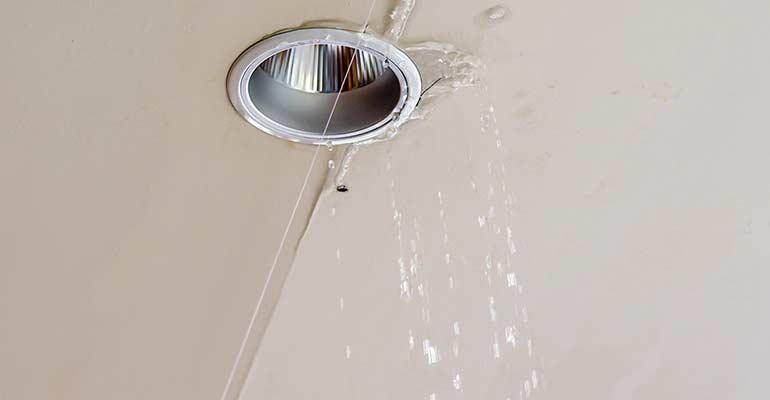Learn About Half a Dozen Common Factors Behind Water Seepage at Home
Learn About Half a Dozen Common Factors Behind Water Seepage at Home
Blog Article
We have stumbled on this great article involving How to detect water leaks in your home down the page on the web and figured it made sense to relate it with you here.

Leaks not only cause waste of water but can additionally create unnecessary damage to your home and promote undesirable natural development. Regrettably, water leakages may go unnoticed since most of the pipework in our residence is concealed. By looking and also recognizing for everyday situations that trigger leaks, you can shield your home from future leaks as well as unneeded damage. Today, we will check out 6 leak triggers that may be causing your pipelines to drip.
Intruding origins
Most water leakages start outside the home rather than inside it. You could see damp patches or sinkholes in your lawn, and also that might indicate that tree origins are invading water lines causing water to leak out.
Rusty water supply
As time goes by, your plumbing system ages and corrosion such as rust may start eating away the pipes. This might be the root cause of discoloration or warping on your water pipes. This calls for an assessment with your plumber immediately. Consider changing the pipelines considering that they are at a higher danger of corrosion than the more recent versions if our plumbing system is old.
Faulty Pipeline Joints
Pipe joints can deteriorate over time, resulting in water leaks. If you have noisy pipelines that make ticking or banging noises, especially when the warm water is transformed on, your pipe joints are possibly under a great deal of pressure.
Instantaneous temperature modifications.
Extreme temperature changes in our pipelines can trigger them to expand as well as acquire unexpectedly. This expansion and tightening might trigger fractures in the pipes, especially if the temperature are below freezing.
Poor Water Connectors
At times, a leak can be caused by loosened tubes and also pipelines that provide your home appliances. More often than not, shifting is what triggers the loosened water Connections. You might find in the case of a cleaning equipment, a pipe may spring a leak as a result of drinking during the spin cycle. In case of a water links leakage, you may see water running directly from the supply line or pools around your home appliances.
Clogged Drains
Blocked drains pipes might be frustrating and also inconveniencing, but they can occasionally end up causing an overflow bring about rupture pipes. Keep removing any type of materials that might go down your drains pipes that might clog them to stay clear of such troubles.
All the above are root causes of leakages however not all water leaks arise from plumbing leakages; some leakages could come from roofing leaks. All leaks need to be fixed immediately to avoid water damage.
Leakages not just trigger waste of water however can likewise cause unnecessary damages to your house and promote undesirable organic growth. By understanding and also looking for daily situations that create leaks, you can shield your house from future leakages as well as unneeded damages. Today, we will certainly look at six leakage creates that may be triggering your pipes to drip.
At times, a leakage can be caused by loose tubes as well as pipelines that supply your home appliances. In case of a water links leakage, you might observe water running directly from the supply line or pools around your devices.
How To Check For Water Leak In Your Home
How To Check for Leaks
The average household's leaks can account for nearly 10,000 gallons of water wasted every year and ten percent of homes have leaks that waste 90 gallons or more per day. Common types of leaks found in the home are worn toilet flappers, dripping faucets, and other leaking valves. These types of leaks are often easy to fix, requiring only a few tools and hardware that can pay for themselves in water savings. Fixing easily corrected household water leaks can save homeowners about 10 percent on their water bills.
To check for leaks in your home, you first need to determine whether you're wasting water and then identify the source of the leak. Here are some tips for finding leaks:
Take a look at your water usage during a colder month, such as January or February. If a family of four exceeds 12,000 gallons per month, there are serious leaks.
Check your water meter before and after a two-hour period when no water is being used. If the meter changes at all, you probably have a leak.
Identify toilet leaks by placing a drop of food coloring in the toilet tank. If any color shows up in the bowl after 10 minutes, you have a leak. (Be sure to flush immediately after the experiment to avoid staining the tank.)
Examine faucet gaskets and pipe fittings for any water on the outside of the pipe to check for surface leaks.
Undetected water leaks can happen without the home or business owner even realizing. If you suspect a water leak, but not able to find the source. It is time to contact a professional water leak detection service, The Leak Doctor.
How To Find a Water Leak In Your Home
https://www.leakdoctor.com/blog/How-To-Check-For-Water-Leak-In-Your-Home_AE197.html

I ran across that content on Top Causes of Home Water Leaks while perusing the internet. Do you know about anybody else who is interested by the niche? Take a moment to share it. I praise you for your time. Kindly pay a visit to our site back soon.
Fix it ASAP! Call. Report this page